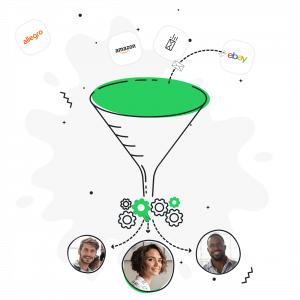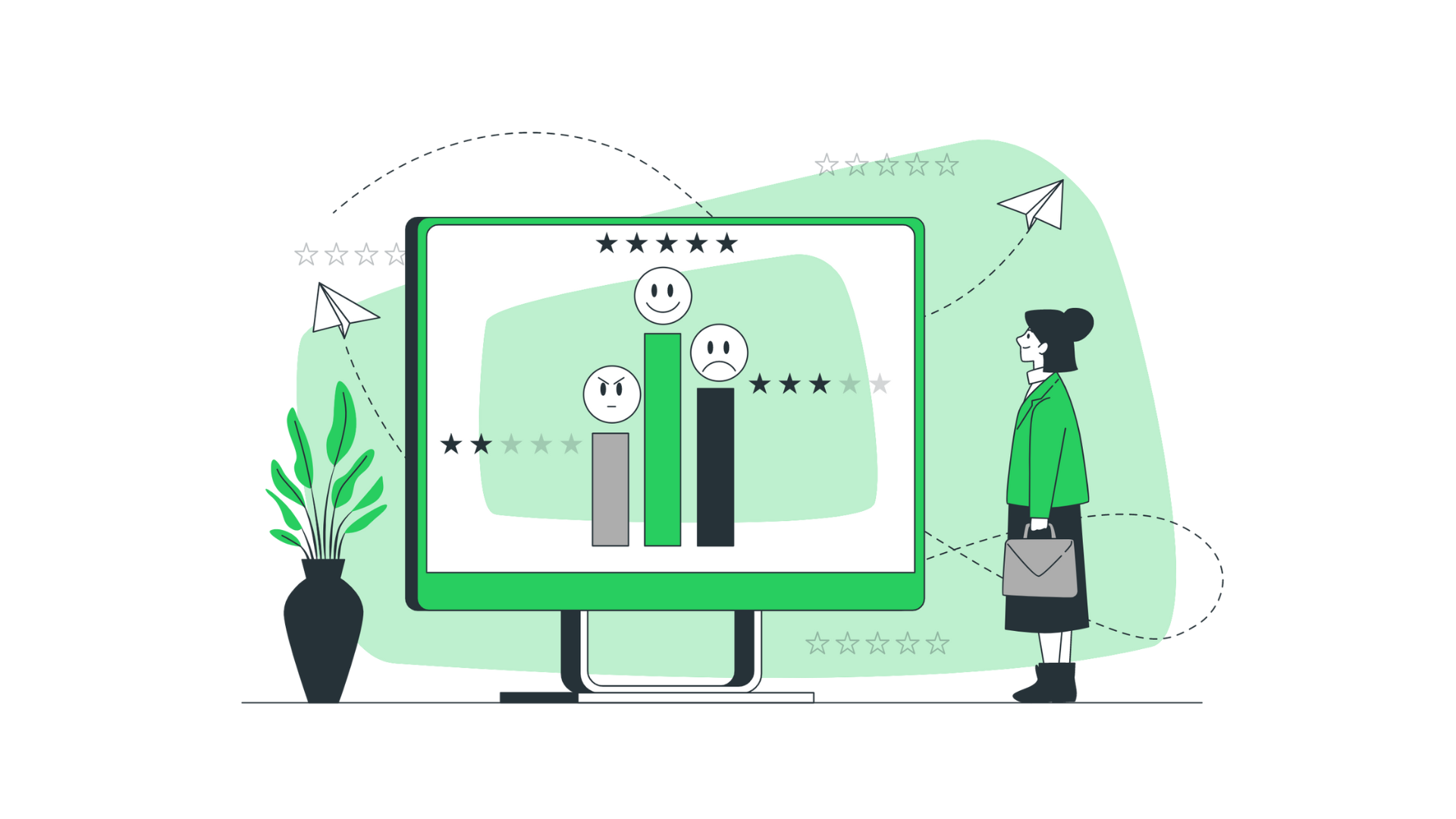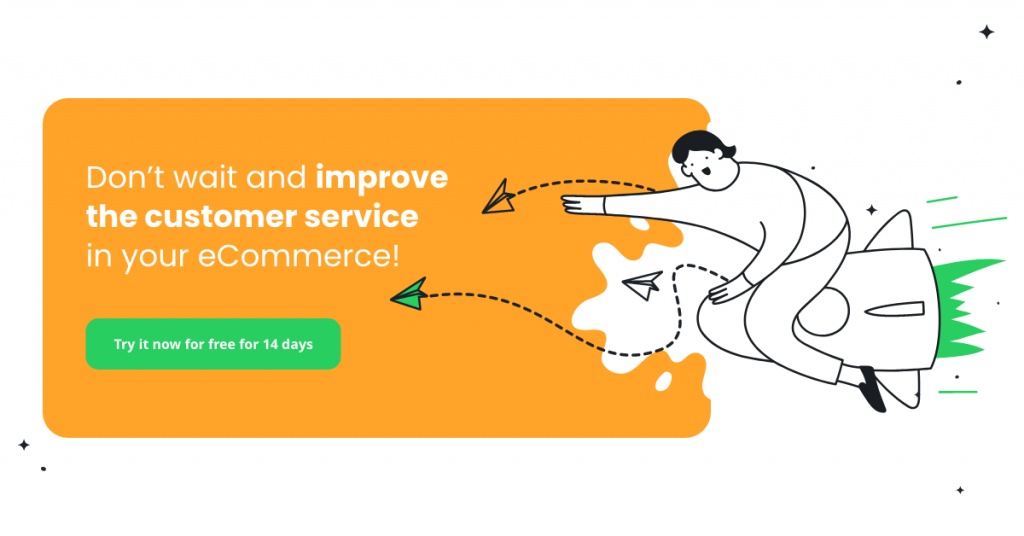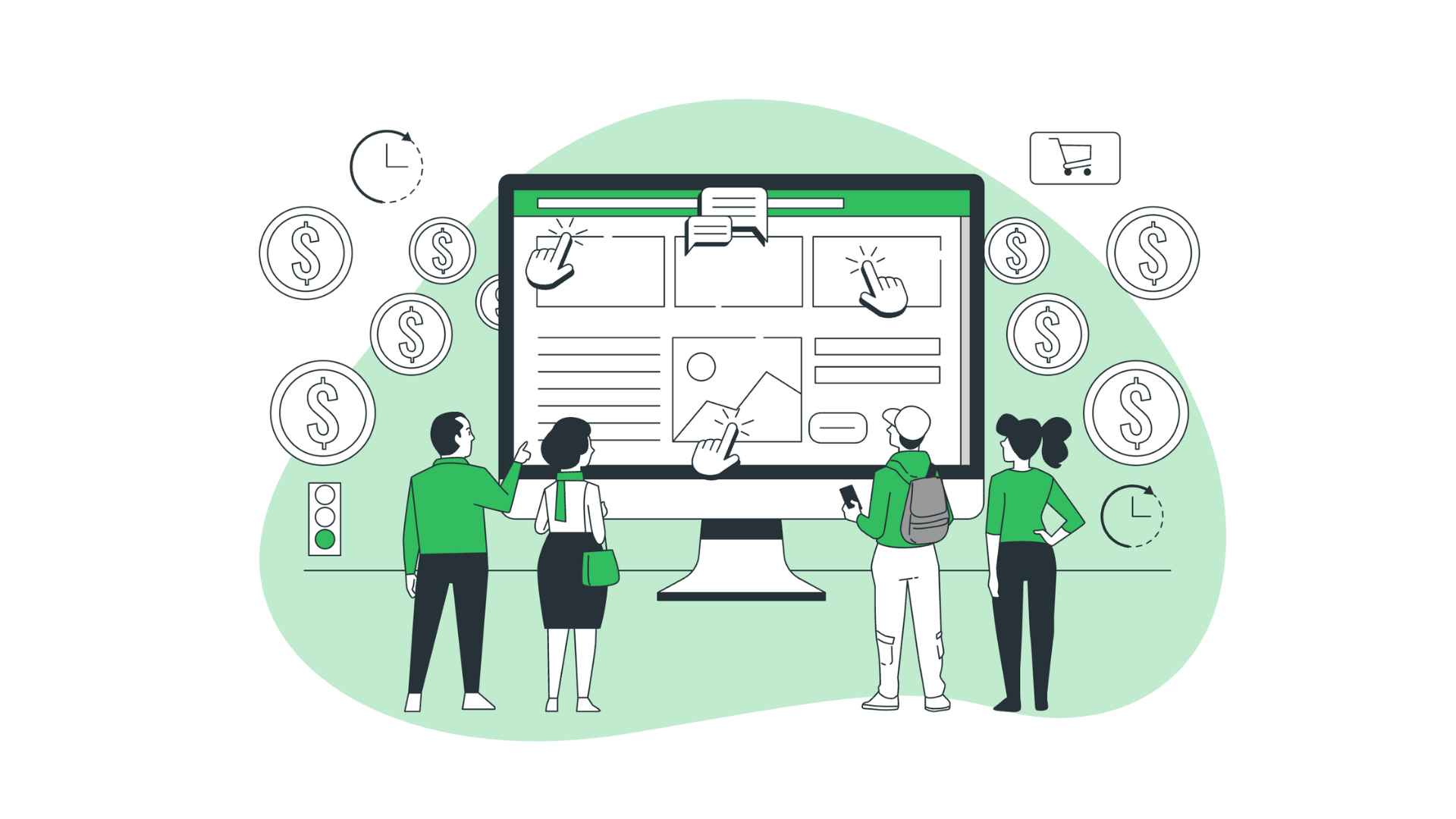Do you know what types of metrics measure customer satisfaction? If not, don’t worry – you’re not alone. A lot of business owners don’t know the answer to this question.
In this blog post, we will discuss three different types of metrics that are used to measure satisfaction of your customers.
We will also provide examples of each type of metric. Keep reading to learn more!
What is Customer Satisfaction?
Customer satisfaction is a measure of how well a product or service meets the customer’s needs and expectations.
It is typically measured using surveys, interviews, and focus groups. However, there are other ways to measure client satisfaction.
And if you want to improve customer satisfaction, it is important to choose the right metrics.
Why Should you Measure Customer Satisfaction?
There are many benefits to measuring customer satisfaction. For example,
- It can help you identify areas where your product or service needs improvement. Since customer satisfaction data is a measure of how well your product or service meets customer needs, it can be used as a guide to improving your offerings.
- It can help you improve retention and loyalty. If you know which customers are dissatisfied, you can take steps to address their concerns and prevent them from leaving.
- Conversely, happy customers are more likely to stick around and continue doing business with you.It can help you attract new customers. Positive word-of-mouth can attract new business.
- And if you have high customer satisfaction scores, you can use them as a marketing tool to attract new customers.There are many other benefits to measuring customer satisfaction. But these are just a few of the most important ones.
What Types of Metrics Measure Customer Satisfaction
#1 Performance-Based Metric
A performance-based metric measures how well a product or service performs against a set of predetermined standards.
For example, you might measure the percentage of customers who are satisfied with the quality of your product. Or, you might measure the number of customer complaints per 100 orders.
#2 Perception-Based Metric
A perception-based metric measures how customers feel about a product or service. This type of metric is typically measured using surveys.
For example, you might ask customers to rate their satisfaction on a scale of 0-100. Or, you might ask customers to rate the likelihood that they would recommend your product or service to a friend or family member.
#3 Outcome-Based Metric
An outcome-based metric measures the results that a customer achieves after using a product or service.
For example, you might measure the number of sales that are generated by your marketing campaign. Or, you might measure the number of new customers who sign up for your service.
Customer Satisfaction Metrics to Measure
Customer satisfaction scores can be used to measure the success of a variety of marketing initiatives, including product launches, new features, or even customer service interactions. By measuring them, you can get a pulse on how well your customers are doing and identify areas where they may need more help, as well as get insights into customer loyalty or customer requests.
#1 NPS
The Net Promoter Score, or NPS, is a popular performance-based metric. It measures client satisfaction by asking customers how likely they are to recommend your product or service to a friend or family member. Customers are typically asked to rate their likelihood on a scale of 0-100.
NPS is calculated by subtracting the percentage of customers who are detractors from the percentage of customers who are promoters. Detractors are customers who rate their likelihood of recommending your product or service as 0-49 on the 0-100 scale. Promoters are customers who rate their likelihood of recommending your product or service as 80-100 on the 0-100 scale.
#2 CES
The Customer Effort Score, or CES, is a popular perception-based metric. It measures customer satisfaction by asking customers how much effort they had to put forth to use your product or service. Customers are typically asked to rate their level of effort on a scale of 0-100.
CES is calculated by subtracting the percentage of customers who report low effort from the percentage of customers who report high effort. Low effort is defined as a CES score of 0-49 on the 0-100 scale. High effort is defined as a CES score of 80-100 on the 0-100 scale.
#3 CSAT
The Customer Satisfaction Score, or CSAT, is a popular outcome-based metric. It measures customer satisfaction by asking customers to rate their level of satisfaction with the results they achieved after using your product or service. Customers are typically asked to rate their satisfaction on a scale of 0-100. CSAT customer satisfaction score can be a game changer for your company.
CSAT is calculated by subtracting the percentage of customers who are dissatisfied from the percentage of customers who are satisfied.
Dissatisfied customers are those who rate their satisfaction as 0-49 on the 0-100 scale. Satisfied customers are those who rate their satisfaction as 80-100 on the 0-100 scale.
#4 FCR
The First Contact Resolution rate, or FCR, is a popular metric that measures customer satisfaction. It measures the percentage of customers who had their issue resolved on the first contact with your company.
FCR is calculated by subtracting the percentage of customers who did not have their issue resolved on the first contact from the percentage of customers who did have their issue resolved on the first contact.
Customers who did not have their issue resolved are those who rate their satisfaction as 0-49 on the 0-100 scale. Customers who did have their issue resolved are those who rate their satisfaction as 80-100 on the 0-100 scale.
#5 ART
The Average Resolution Time, or ART, is a popular metric that measures client satisfaction score. It measures the average amount of time it takes to resolve an issue.
ART is calculated by subtracting the percentage of customers who had their issue resolved in less than 24 hours from the percentage of customers who had their issue resolved in more than 24 hours. Customers who had their issue resolved in less than 24 hours are those who rate their satisfaction as 80-100 on the 0-100 scale. Customers who had their issue resolved in more than 24 hours are those who rate their satisfaction as 0-49 on the 0-100 scale.
How to Choose the Best Customer Satisfaction Metrics?
There are a few things to consider when choosing the best customer satisfaction metrics for your business.
First, you need to decide what type of metric you want to use. Sometimes, businesses will use multiple metrics to get a well-rounded view of customer satisfaction score.
Second, you need to consider what your goals are. What do you want to learn about your customers? What do you want to improve?
Third, you need to think about how you will collect the data. Some customer service satisfaction metrics can be collected through surveys, while others may require data from customer relationship software, support team requests, or other interactions.
Finally, you need to decide how often you will collect the data. Some businesses collect customer feedback data daily, while others do it weekly, monthly, or quarterly.
The most important thing is to start measuring satisfaction with metrics that are right for your business and that will help you achieve your goals. This can ensure customer retention, positive reviews, business growth, and your client satisfaction scores going places.
Customer Satisfaction Tips: How to Increase Customer Satisfaction
#1 Perform on feedback received
As a business, you should be constantly looking for ways to improve your products or services. A great way to do this is by soliciting feedback from your customers and then using that feedback to make changes. You gather feedback for customer experience in two ways:
-Passively: You can passively collect feedback by monitoring things like customer support interactions, social media mentions, and product reviews.
-Actively: You can actively collect feedback by conducting surveys or sending out questionnaires.
Once you have gathered feedback, it’s important to analyze that data and look for patterns. If you see that a particular issue is causing multiple customers to be dissatisfied, then you know that’s something you need to address. And that’s often the first step to improve customer satisfaction.
#2 Improve metrics that are off
If you notice that one or more of your customer satisfaction metrics are off-track, then you need to take action to improve those metrics. For example, if your NPS score is declining, then you need to find out why and take steps to turn things around. When it comes to customer satisfaction feedback, it’s important to constantly be making improvements.
#3 Offer incentives
One way to encourage customers to provide feedback is by offering incentives. For example, you could offer a discount on future purchases or enter customers into a contest for a chance to win a prize. Incentives will not only help you get more feedback but also improve the quality of that feedback. When customers know they have something to gain, they’re more likely to take the time to provide thoughtful and detailed responses.
#4 Train employees
Your employees play a big role in the process. If your employees are properly trained, then they’ll be better equipped to deal with customers and resolve their issues. Employees who are not properly trained are more likely to make mistakes that will lead to dissatisfied customers. Your team can’t provide excellent customer service if they’re not properly trained, so make sure to invest in employee training.
#5 Identify bottlenecks, quickly
If you want to improve customer satisfaction scores, then you need to be able to quickly identify and resolve any bottlenecks in your process. Bottlenecks can occur at any stage of the customer journey, so it’s important to constantly be on the lookout for them. Use data to help you identify bottlenecks so you can take steps to remove them.
#6 Run a customer satisfaction survey
You can do it only once, but it’s important to measure how satisfied your customers are with your products or services. A customer satisfaction survey will give you valuable insights that you can use to improve your business. Just make sure to keep the survey short and sweet, otherwise, you run the risk of frustrating your customers. But when you see customers respond to it, you can be sure that it’s valuable feedback.
#7 Turn unhappy customers into happy promoters
If customer interaction is important to you, then you should focus on turning unhappy customers into happy promoters. It’s easier (and cheaper) to keep a customer than it is to acquire a new one, so it’s worth the effort to try and salvage the relationship. When you make an effort to turn an unhappy customer into a satisfied one, you improve your chances of retention and you also create a valuable advocate for your business.
#8 Make the most of your loyal customers.- customer loyalty FTW!
Let your company determine what the most important metric is to track for customer acquisition cost. If you want to increase customer satisfaction, then make sure you’re making the most of your loyal customers. They are the ones who will stick with you through thick and thin and they are also the ones who will provide you with valuable feedback. So don’t take them for granted and make sure you increase customer satisfaction in that group too.
#6 Use tools to automate
There are a number of tools like Salesmate that can help you automate the process of collecting and analyzing data. These tools can save you a lot of time and energy, which you can then use to focus on other areas of your business.
One of them is Responso.
How can you improve overall customer satisfaction with Responso
Customer service is crucial for your business if high customer satisfaction is your aim.
This is why Responso offers you a chance to improve it in the easiest way possible.

By using our software, you will be able to:
01 Automate some of the tasks with autoresponder assistance
When customers urgently need an answer, they can get all the necessary information in a blink of an eye. Thanks to automatic replies, Responso sends personalized messages with essential details immediately. We don’t limit how many messages you or the autoresponder can send, so don’t worry about missing out.
02 Make data-driven decisions
This feature is essential to make changes or determine your agents’ performance. For example, you can track their effectiveness, check where most messages come from, or monitor the average response time of a specific agent or your entire team. Having known all these insights, you can make informed decisions about growing your team or scaling your operations.
03 Streamline your team workflow
Responso’s heatmaps show the distribution of tickets and who is the most loaded worker at the moment. It’s good to know because it may hint that:
- it’s time to hire a new employee
- you need to make some schedule changes
- your workload is getting unbearable
- who deserved the promotion (why not?)
and more. Without heatmaps, you’d have to guess all of the above.
04 Gather feedback from various sources
Since Responso can be integrated with many platforms, you can collect suggestions and perspectives on what needs some improvements and what customers are happy about. Also, getting feedback allows you to build a stronger relationship with your customer by showing them that you value their input.
And, with such feedback, you can learn how to better deal with angry customers.
05 See all customer details and their orders
Using Responso, you can easily access all the purchase information. The data gathered in one place will help answer customer order-related questions. You can also get details about the customer on the platform to avoid misunderstanding.
Conclusion
These are some of the most important things to keep in mind when it comes to clientsatisfaction. By following these tips, you can improve your customer satisfaction levels and grow your business. Responso is a great tool that can help you improve your customer service efforts and, in turn, improve customer satisfaction. Try it out today and see the difference it can make for your business!
Customer Satisfaction Metrics – FAQ
What are customer satisfaction metrics and why are they important to track?
Metrics for customer satisfaction are important to track because they give you an idea of how well your company is doing in terms of providing a good customer experience. By tracking client satisfaction metrics, you are able to identify areas where your company needs to improve in order to provide a better experience for your customers.
How to track customer satisfaction metrics over time?
This may be tricky if you do not have a solid customer satisfaction metric tracking system in place. You will want to make sure that you are tracking the same metrics over time so that you can identify any trends. Additionally, it is important to track client satisfaction metrics across different channels so that you can get a holistic view of the customer experience.
What are the most common customer satisfaction metrics?
While there are some metrics you may have heard of, such as Net Promoter Score (NPS), there are many other types of customer satisfaction metrics that you can track.
With CSAT, for example, you can measure how satisfied customers are with a recent purchase or interaction.
You can also track customer effort score (CES), which measures how easy it is for customers to do business with your company.
Other customer satisfaction metrics include first call resolution (FCR) rate and call center abandonment rate.
What to do with the data you collect?
Leverage it to improve the customer experience! Having data allows you to see where the customer experience may be falling short and makes it possible to take steps to improve it.
And, if you see that customer satisfaction is trending downward, you can take proactive measures to address the issue before it becomes a bigger problem.
What are the limitations of customer satisfaction metrics and how to overcome them?
Oh, there are a few. For one, customer satisfaction metrics only give you a snapshot in time and may not be representative of the overall customer experience. Also, customer satisfaction metrics can be subjective and may vary from person to person.
This stands for customer service interactions, as well. You can only overcome these limitations by supplementing customer satisfaction metrics with other data points, such as customer surveys or interviews.
What does net promoter score NPS measure?
If you want to achieve customer satisfaction on a large scale, you’ll need to measure it. To do this, you can use Net Promoter Score (NPS).
NPS is a customer satisfaction metric that measures how likely your customers are to recommend your company to others. Low NPS can indicate poor customer service and cause customer churn.
What is customer effort score ces?
Improving customer satisfaction can be a challenge, but it’s worth it to reduce customer churn and increase loyalty. To track customer lifetime value, you can use customer effort score (CES).
CES is a metric that measures how much effort customers have to expend to do business with your company. A high CES score means that it is easy for customers to do business with you, which leads to customer loyalty. A low CES score indicates that customers have
What is customer health score?
If you want to prioritize customer success, you need to track customer health score (CHS). CHS is a metric that measures how likely your customers are to stick around and continue doing business with you.
A high CHS score means that customers are happy and engaged with your company or service agents, and can become loyal customers. A low CHS score indicates that your customer feels disengaged and may be at risk of churning.
What is customer lifetime value?
When measuring these metrics, it’s important to look at the big picture. To do this, you can track customer lifetime value (CLV). CLV is a metric that measures the total value of a customer over the course of their relationship with your company. This includes factors like customer acquisition costs, retention rates, and churn rates.
What is customer satisfaction score?
CSS is a CS metric that measures how satisfied customers are with their recent purchase or interaction. This can be done through surveys, interviews, or other feedback mechanisms. A high CSS score indicates that customers are happy with their purchase or experience, and a low CSS score indicates that there is room for improvement.
What are the best methods for collecting customer feedback?
Customer expectations are constantly changing, so it’s important to stay on top of what your customers want and need.
The best way to do this is to collect customer feedback on a regular basis. There are a few different ways you can go about doing this, such as conducting customer surveys or interviews, observing customer behavior, or using data from customer support interactions.
Even a few survey responses or negative reviews can give you valuable insights into potential sources of customer churn rate, negative word flow, bad customer service, customer frustration, and more.
Customer satisfaction surveys can also show you what to do to strengthen customer relationship and turn unsatisfied customers into brand ambassadors promoting company’s products.
Why is customer satisfaction important?
Customer acquisition cost for new customers is usually higher than retaining your existing customers.
If you make your customers happy, follow customer centricity principles, and make a customer journey a breeze, you’re on the right path for increasing customer satisfaction, achieving business growth, bringing customer success and engage customers with your brand credibility.










